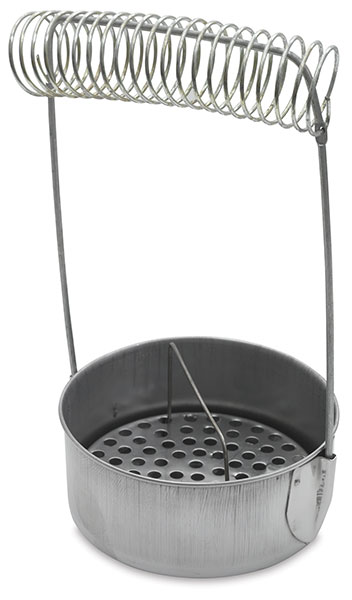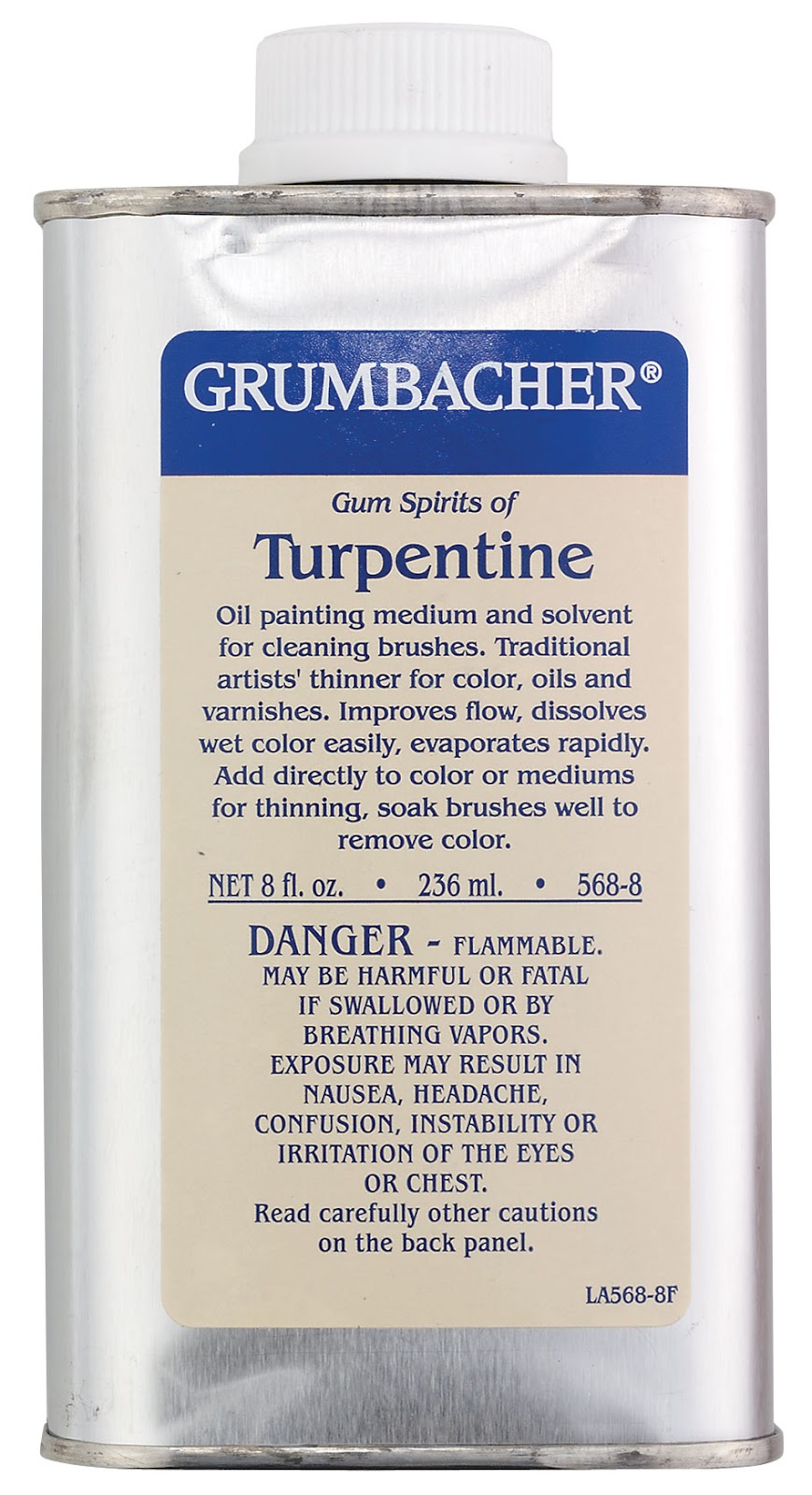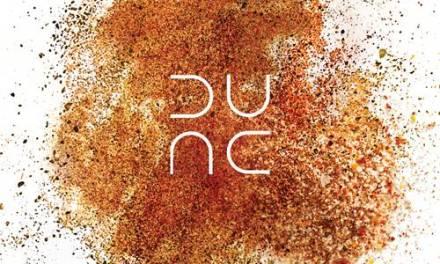-Dan dos Santos
Now that we know how to avoid the dangers of Solvents, let’s discuss WHY we need to. First, some facts, as well as common misconceptions, about the hazards of turpentine.
Well… That’s the good. So now you may be asking yourself, “If turpentine is all-natural, what’s the big deal?” The problem is, even all-natural things can kill you… like bears, and mushrooms, and turpentine.
According to OSHA, The effects of turpentine on humans are as follows:
Turpentine is a skin, eye, mucous membrane, and upper respiratory tract irritant in humans. It may also cause skin sensitization and central nervous system, gastrointestinal, and urinary tract effects.
The lowest estimated oral dose reported to be lethal in humans is 441 mg/kg. Exposure to a 75-ppm concentration for 3 to 5 minutes irritates the nose and throat, and exposure to a 175-ppm concentration irritates the eyes and may be considered intolerable by human volunteers.
Ingestion of turpentine causes a burning pain in the mouth and throat, nausea, vomiting, diarrhea, abdominal pain, excitement, ataxia, confusion, stupor, seizures, fever, and tachycardia and may cause death due to respiratory failure.
Toxic glomerulonephritis and bladder irritation, with hematuria, albuminuria, oliguria, and dysuria, have been associated with overexposure to the vapor of turpentine in the past; however, the more purified form of turpentine now in use appears to have decreased the incidence of or to have eliminated turpentine-induced nephritis.
Splashes of the liquid in the eye produce severe pain and blepharospasm; conjunctival redness and temporary corneal erosion may also occur, but these effects are reversible. Chronic skin exposure to turpentine may produce a hypersensitivity reaction, with bullous dermatitis and/or eczema.
A case-control study of workers in particle-board, plywood, sawmill, and formaldehyde glue factories demonstrated a statistically significant association between chronic exposure (longer than 5 years) to terpenes (the principal component of turpentine) and the development of respiratory tract cancers.
So even though turpentine is pretty darn bad for you, the good news is that you can usually tell that it’s doing something bad. If you can identify the problem, it’s a lot easier to rectify it.
Now, some people have incredible tolerances for harmful things (me, not so much). It’s quite possible that you could work in a studio FILLED with turpentine fumes for a lifetime and never have a problem. It’s also quite possible that your Grandmother smoked 20 cigarettes a day for 90 years and lived to be 105. However, many (if not most) people will develop breathing problems, skin rashes and migraines when exposed to turpentine in levels that are quickly achieved when painting with oils in an enclosed room.
So what do you do about it? Well, like Justin said in part 1, you try to minimize the amount of vapor in the air. You can do this two ways:
1. Increase the amount of air.
2. Decrease the amount of vapors.
Personally, my primary approach consists of #2.
I never, ever, ever, paint with an open jar of turpentine in my studio. Not even to clean my brushes. I do however, use a small jar of medium, consisting of equal parts odorless mineral spirits and linseed oil.
(Odorless mineral spirits [also known as OMS] is an alternative solvent, which evaporates slower than turpentine, and is FAR less toxic. However, it is also not as potent a solvent, and therefore cannot be used to dissolve certain resins, like Damar.)
Why the mixture? Oils can be diluted with the addition of other oils, but they can not be dissolved. This is important when dealing with fat and lean layers of paint. Basically, a lean layer has more solvent. A fat layer has more oil. By mixing the two together, I achieve neutrality… a good thing for a painting medium to be.
But the mixture serves an additional benefit. The addition of oil slows the evaporation rate of the mineral spirits. By slowing the evaporation rate, you considerably reduce the amount of harmful vapor in the air. In fact, there are certain mineral spirits, like Gamsol, which are designed to evaporate 4 times slower than regular turpentine.
To clean my brushes, I simple dip them in the medium (without touching the bottom of the jar), and then squeeze out the excess paint with a rag. Anything that doesn’t come off from that, is then washed away with plain soap and water.
Here’s another way you can reduce the amount of vapor in your studio… Choose the right medium jar.
A large, wide mouthed jar provides a greater surface area by which the turpentine/oms can contact the air. Think of it like leaving the door wide open on a cold day… with zombies outside. By using a smaller, narrow mouthed jar, you greatly reduce the surface area of exposed solvent. Cutting your jar’s mouth size in half will literally cut the vapors in half! In the same respect, if you plan on taking a break from your easel for even 5 minutes, cover your medium jar!
 |
| The absolute worst thing you could be using to hold turpentine while you work!!! |
For me, just by reducing the amount of turpentine vapors in these 2 simple ways, I found that I can work comfortably without any noticeable adverse affects. Large double-doors bring in fresh air when I need it, and that’s it.
(Edit: There is now a lot of useful info in the comments section. I guess an additional post is in order!)
Up next… the real killer.







Hi Dan, both you and Justin have been posting a lot about turpentine, but what about mineral spirits[or odorless mineral spirits, which I am using]? Or other turpentine substitutes for that matter?
Are they equally as toxic as turps?
Great post and especially relevant in winter when opening windows and doors is an issue- Thanks. I really like the 50/50 oil/gamsol mix.
I've heard that walnut oil works as a great medium or cleaner, like dan's mixture above. Apparently it's basically nice and odorless and natural. Anyone have experience using this?
Yes, I use walnut oil as my only medium and wipe and clean my brushes with the walnut oil. I use any dish type soap to clean my brushes after. After wiping my brushes I put enough walnut oil into the bottom of a narrow container (supported by putting a hole in a heavy piece of wood to keep all from falling over ) with enough oil to meet the férule – I let it soak as long as I need. I then rub the brushes clean and then use a half a tennis ball where I have put some water and soap I to and give them a gentle scrub – repeat until the brushes are clean. Squeezing the fat part of the brush with a cloth material works well – but wear gloves
This makes me feel a little bit better about going mostly all digital. Not like that doesn't have it's own list of health problems. Sounds like Acrylic might reign supreme as far as safety goes. Awesome post by the way, I didn't know a lot of this and there's a lot of good advice here!
I love traditional medium, but my question, which I haven't seen answered is…when all is said and done, how do I dispose of medium, turpentine, palette paint, etc?
Bring it to your local recycling center. Larger cities may have a specific pick-up day for hazardous materials, like oil and batteries. If you are using a glass jar, just seal it up when done, toss it in a box, and wait for the right day to get rid of it all.
yeah, that´s pretty cool for super-duper artists. But we, the rest of the (painter) mortals usually don´t have a studio. We usually paint where we sleep (our tiny rooms in cheap rent shared flats).
I studied painting conservation and then I decided to pursue a career in illustration. What I meant is that I´ve spent 5 years studying organic solvents and other mediums usually used in the paint (amongst other thingies) and turpentine is one of the less dangerous solvents. Five hundred years ago, students had to corrode tin slabs to get white or yellow pigments, often getting badly poisoned.
I mean, It´s great to know all these facts, and of course every artist should know about correct studio ventilation and safety, but If you can´t afford a studio it will only scare you to death and make you stop painting – losing the painter boldness, hahaha.
Dont forget that real turpentine reacts differently with oil paint, it oxidises it instead of just evaporating like OMS/turpenoid does, thus using OMS for a ground wash is a bad idea. I usually use turpentine for the imprimatura and let that dry off outside the studio and then only use OMS to clean the brushes, making sure to squeeze out all of it before dipping back in to the paint. If Im pleine airing its turpentine all the way!
I should also mention that CLEAN turpentine can actually be disposed of any way you want. It's natural, and bio-degradable. The trouble is DIRTY turpentine, since it is the PAINT that is the real disposal hazard.
The dangers of acrylics may surprise you. More on that soon!
They are not nearly as dangerous. I amended to article to help clarify a few things. I expect I will do a whole post about it soon.
Spike of Lavendar is another option you may want to look into.
I think when you know the facts, and work cleanly, the dangers are actual minimal. Like you said, it's actually one of the least volatile solvents. However, just like working with a table saw… a little bit of fear is a GOOD thing.
Walnut oil works fine as a medium, but so does linseed oil. I think walnut oil is less prone to yellowing, though. Both are nice and non-toxic, but used alone it will be a rather fat medium. I prefer something leaner for the initial washes, but I've often used linseed or walnut oil alone for the upper layers.
For cleaning, I have never, ever used any solvent. Oil for initial cleaning out, and then soap. But I wouldn't use walnut oil for cleaning – linseed oil is cheaper.
I have even cleaned brushes with olive oil when I didn’t have anything else and it actually worked
I added an extra blurb to help clarify the difference between OMS and turpentine.
However, to address your comment; The majority of Turpentine does NOT oxidize, not even when mixed with paint (though some small amount may oxidize due to the natural resins present even after distillation). It still evaporates, just like OMS. It's only the paint that oxidizes. The notable difference though, is that turpentine can dissolve crystals (like mastic and damar) allowing them to re-crystalize after evaporation.
However, the different evaporation rates between OMS and Turp -can- affect the binding capabilities of the paint left behind (and is likely the cause of your suspicion).
Because turp evaporates faster, the oil has more time to oxidize and harden on it's own. The slower evaporating OMS will break down the binding agent (the oil) over a longer period of time, and may prevent proper adhesion if used too liberally.
This is another reason why I add oil to my medium, it helps the preliminary washes bind better.
Hi Dan…..please what is OMS????? Have I missed the explanation earlier? I really dislike acronyms’….Please clarify….Many thanks for a great site!
OMS is Odorless Mineral Spirits, like Gamsol by Gamblin for instance.
Thanks, Dan!
These posts have been a great help to me!
Another great post! Looking forward to 'the real killer', that should be a fun read (please let it not be the mushrooms). I think that if a person is sensible and at least adheres to the main issues outlined in this and Justin's post, they will be fine. A big bucket filled with turps hanging off the easel, the turp-drenched brush whacked against the leg of the easel, spraying it everywhere … now that can kill even a bear of a man!
I think you should have respect to your tools instead of fear.
Ok, I'm bewildered here. Although I'm a beginner, I've read a little so as to understand some of what is being said but, let's suppose that I know nothing, I don't understand the why/how/when and differences between the various thinners, cleaners etc. There must be otherwise there would only be one. Can someone direct me to site or to any book that covers this stuff, so I can understand the things being covered in this article in their totality.
Dan, what about D-limomene? I've used with success to clean up my oil brushes. D-limonene and some detergent is all I usually use. It leaves a pleasant citrus smell in the air too.
Yes, I’d like to hear you thoughts about D- Limonine
Thanks
I too would love this information, as I'm just getting into oil painting… thanks!
Wetcanvas.com is a website of a lot of artists of various disciplines and skill levels.
To simplify;
Binder; the medium that holds the pigment together. Oil paint is called oil paint because it's pigment mixed with oil. Usually Linseed oil but other oils can be used for various reasons; safflower, walnut, poppy. All are considered oil paints when mixed with pigment. Watercolor paints have gum arabic mixed with the pigment. Acrylics are an acrylic polymer mixed with pigment. Egg tempera paints are egg whites mixed with pigment, You get the idea.
Pigment; the color. Linseed oil mixed with Cadmium Red is Cadmium red oil paint. Cadmium red mixed with gum arabic is watercolor paint.
Solvent; what can dissolve the binder. Oil paints have multiple solvents which are the purpose for these articles.
Turpentine, Odorless Mineral Spirits, D-limonene, Oil of Spike Lavender, Gamsol, etc are the solvents used with oil paints. One word of caution; Venetian Turpentine is NOT a solvent but an additive to a medium. They have different uses.
Medium is the term for what is mixed with the paint to improve the handling for various effects. Different mediums have different purposes. A medium is an oil and a solvent; sometimes something else but I'm trying to keep this simple. This article is about the dangers of Turpentine and how to prepare for it since there are certain mediums/additives that only dissolve in turpentine.
Turpentine is useful when working with what are called resins. Resins are something that can be added to your paint medium for various effects. One simple medium is a mixture of stand oil, damar varnish, and turpentine. The turpentine is necessary because only it can dissolve the damar crystals. In this instance the damar varnish adds flexibility to the paint film when it is dry. Oil paint film tends to get more brittle as it ages hence the need for the medium. This presumes using that specific medium. Unlike acrylics which are fairly easy to learn (except for that too fast drying time) oils can be a lifetime of learning. They've been around for 400+ years. Also, acrylics have only really been around for 50+ years so we are still learning their limitations.
Hi,
Recently had to get rid of turpentine in my studio- Made my model sick-
The problem with OMS is that it does not dissolve damar and some feet that it is damaging to the paint film. Also OMS outgasses as well and is possibly just as dangerous. They add a smell agent to natural gas so you can smell it coming from your stove etc. Just because you can't smell it does not mean it is not dangerous.
I found this website after reading an article on The Huffington Post. He uses Spike of Lavender oil to clean dilute his paint while painting- expensive- but his price is excellent. He cleans his brushes in his own bio based solvent- very reasonable- instead og OMS. Very knowledgeable guy.
https://www.arttreehouse.com/store/content/spike
You are very wrong about turpentine.and osha is bought and paid for reguarding turpentine.did you know it is still used medically today.?plus it was used since bablylon for medical cures.and was in the merck manual for many cures until the 20s.watch healing with turpentine on you tube.it cured gonnarhea just by breathing it!! Please,stick to art,…
Well, someone forgot to read the whole article.
Wait, wait…we used egg YOLK for egg tempera painting at the School of the Museum of Fine Arts Boston…no whites.
Wait, wait…we used egg YOLK for egg tempera painting at the School of the Museum of Fine Arts Boston…no whites.
What about white spirit instead of Turps?
Wite spirit is a turps substitute
White spirit IS a turps substitute..!
Needed to compose you a very little word to thank you yet again regarding the nice suggestions you’ve contributed here.
Can anyone tell me if turpentine vapour sinks (like petrol) or risers ?
I want to Ventilate my studio and do not know weather to install on the floor or Ceiling.
James, the short answer is, it sinks, but it probably doesn’t matter.
The relative vapor density of Turpertine Vapor is indeed heavier that air: 4.6 – 4.8 (air = 1).
But because the vapor disperses so readily, the relative density of the vapor/air-mixture at room temperature is just: 1.01 (air = 1)
Meaning that all the harmful VOCs in the vapor are mixed pretty well with the regular air you breath. Just moving your body through the air will mix it all up.
The vapors do indeed sink, so keeping the outward ventilation low is ideal. But the height doesn’t matter nearly as much as proximity, and quantity of fresh air available.
Just keep your ventilation as close as possible to the origin of the fumes, and try to pull the air away from the area you are sitting in.
Don’t cry because it’s over. Smile because it happened.
Great post